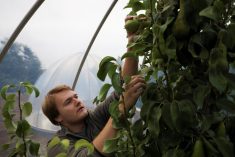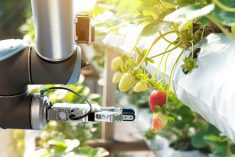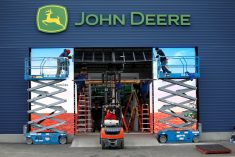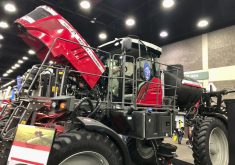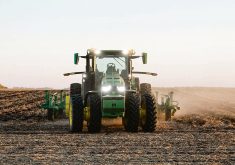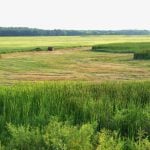Glacier FarmMedia’s John Greig is at the World Seed Congress in Rotterdam, the Netherlands. Watch for his coverage in Glacier FarmMedia’s publications.
The Netherlands is known for its greenhouses and its seed production. A tour on the third day of the World Seed Congress concentrated on both of those leadership positions for the country.
At the Syngenta Tomato Vision seed research facility near Amsterdam, the company screens around 800 potential varieties of tomatoes each year, of which two or three will end up as options for growers.
Read Also

Federal budget shows remaining disconnect between agriculture, policymakers, panelists say
Canada’s agriculture sector is still disconnected from policymakers in some ways, say panelists at a CAPI webinar
WATCH: Tackling the labour crunch with robotics
The company is helping to test a robotic tomato picker made by Pittsburg startup Four Growers. In a row of the research tomatoes, there could be 40 different varieties. Geoffrey Hipps, a technical sales representative for Syngenta, said they are finding that there are differences in the ability of the automated system to harvest some varieties of tomatoes.
Syngenta is known for its specialty tomato varieties, namely the small, sweet, snacking tomatoes growing in popularity. The labour to harvest small tomatoes individually is greater than for large tomatoes so the automated system is finding a place there.
The first commercial system for Four Growers has been installed in a greenhouse in Canada.
The biosecurity is incredibly high at the facility, which meant visitors could not take any cameras into the facility. No video of the vacuum-based robot could be taken.
Tomato brown rugose fruit virus is the largest disease concern for tomatoes and is taking up a significant amount of Syngenta breeders’ time as they work to breed resistance.

Cut lettuce a seed development priority
At the Rijk Zwaan seed research greenhouse, south of Rotterdam, the company has 500 varieties of lettuce for sale, and it continues to screen for new varieties all the time.
There is more lettuce being grown in greenhouses, especially in Europe. Spain, which supplies European supermarkets with lettuce in the winter, struggles with a changing climate, said Bauke van Lenteren, a marketing specialist with Rijk Zwaan.
Greenhouse vegetable production is mostly moving to hydroponic production and that’s what is tested at Rijk Zwaan’s large research facility.
The company is also responding to the increased demand for cut lettuce which consumers can pick up in stores and throw directly into a salad. The company has developed a conventional trait that helps lettuce grow more uniform leaves, which the lettuce processors like as it makes the final cut product more uniform.






